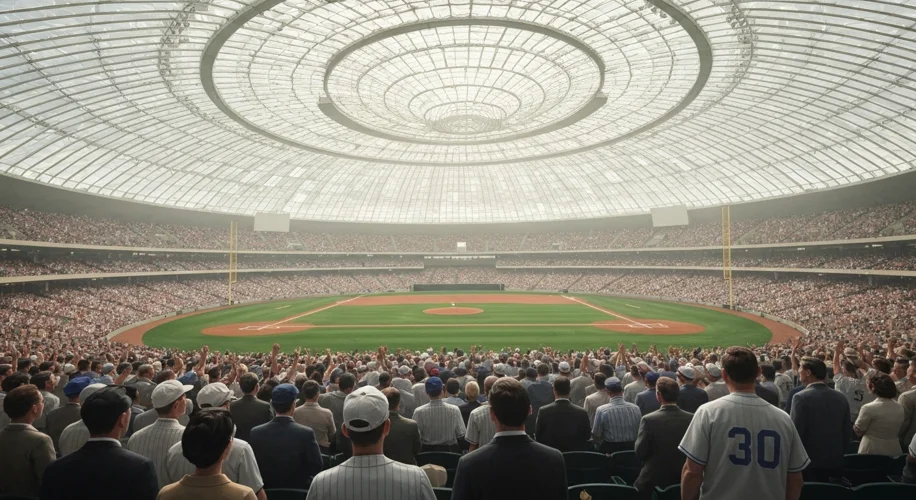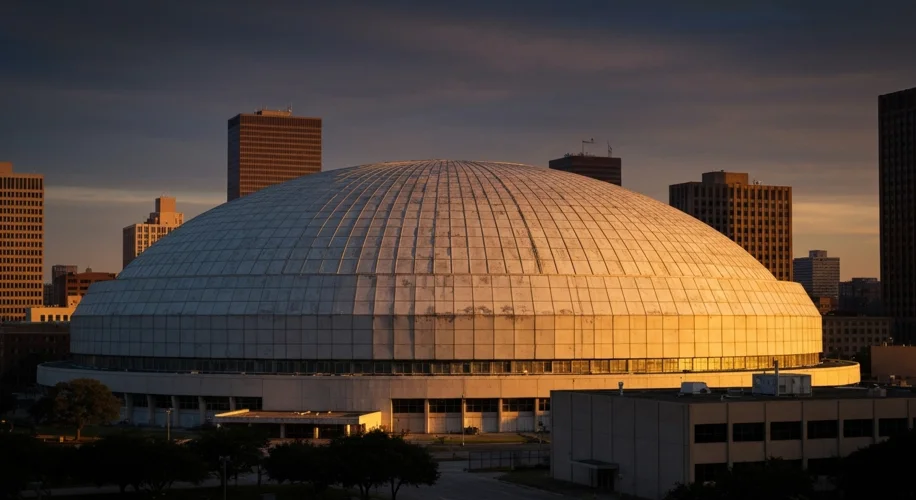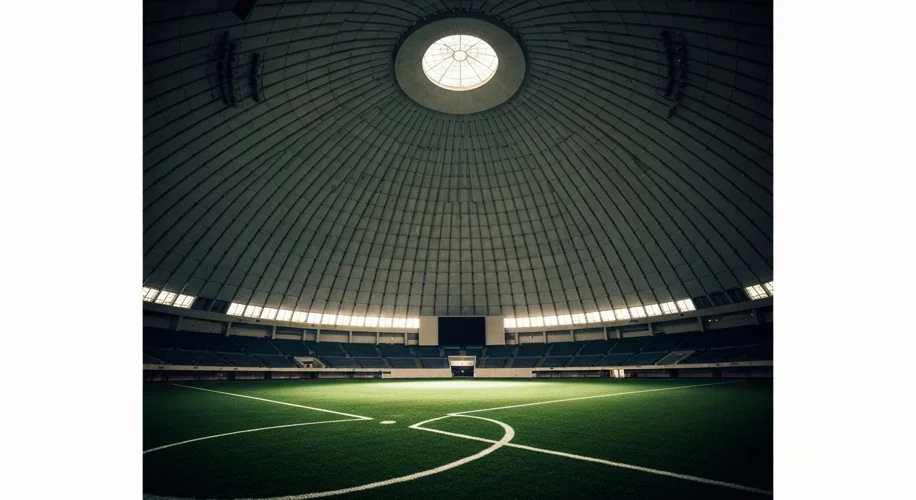In the heart of Houston, Texas, a monument to American ambition once soared, a gleaming beacon of innovation and a testament to a nation reaching for the stars. The Houston Astrodome, christened the “Eighth Wonder of the World,” was more than just a sports stadium; it was a vision of the future materialized, a dazzling spectacle that captured the imagination of a nation captivated by the Space Race.
Opened in 1965, the Astrodome was the brainchild of Judge Roy Hofheinz, a visionary who dreamt of a domed stadium that could shield spectators from Houston’s sweltering heat and humidity, and the region’s notorious mosquitoes. He envisioned a place where baseball could be played year-round, in unparalleled comfort and technological splendor. The result was a marvel of modern engineering. Its massive, translucent fiberglass roof, a revolutionary concept at the time, allowed natural light to flood the arena, though it famously proved too bright for players to see the ball. This led to the development of “Astroturf,” a synthetic playing surface that would become synonymous with the stadium, forever changing the game of baseball.

The Astrodome quickly became a symbol of Houston’s booming growth and its connection to the burgeoning space age. Home to the Houston Astros baseball team and the Houston Oilers football team, it hosted legendary athletes and unforgettable moments. Joe Namath, the flamboyant quarterback, led the Oilers to AFL dominance within its walls. For the Astros, it was a playground for stars like Joe Morgan and Bob Watson, who brought the team to new heights. The stadium was also a versatile venue, hosting religious gatherings led by Billy Graham, concerts by musical giants, and even the infamous “Battle of the Sexes” tennis match in 1973, where Billie Jean King defeated Bobby Riggs, a landmark event for women’s rights.
However, the very elements that made the Astrodome a pioneer also contributed to its eventual decline. The intense glare from the domed roof led to the painting of the translucent panels in 1966, plunging the stadium into an artificial, dimly lit environment that many found unnatural. Astroturf, while innovative, was notoriously hard on players’ knees and ankles, contributing to injuries. As newer, more modern stadiums with retractable roofs emerged, the Astrodome began to feel dated, its once-cutting-edge features surpassed by newer technologies.
The Oilers moved to Tennessee in 1996, and the Astros followed suit in 1999, leaving the Astrodome without its primary tenants. While it continued to host other events, including college football games and the NCAA Final Four, its glory days were undeniably past. Proposals for redevelopment and preservation efforts emerged, but none materialized, and the once-proud Eighth Wonder began to fall into disrepair.

Today, the Astrodome stands as a poignant reminder of a bygone era of bold architectural ambition. Its iconic silhouette still dominates the Houston skyline, a ghost of its former self. Preservationists have fought valiantly to save it from demolition, recognizing its historical significance as a groundbreaking structure that pushed the boundaries of sports architecture and reflected the optimistic spirit of mid-20th century America. The debates over its future, whether it will be reborn as a convention center, a vertical farm, or something else entirely, continue, underscoring the deep affection and historical weight this once-mighty dome still carries.
The story of the Astrodome is a compelling narrative about innovation, progress, and the inevitable march of time. It reminds us that even the most revolutionary creations can eventually become relics, but their impact on history and culture can endure, echoing through the decades like the roar of a long-departed crowd.

